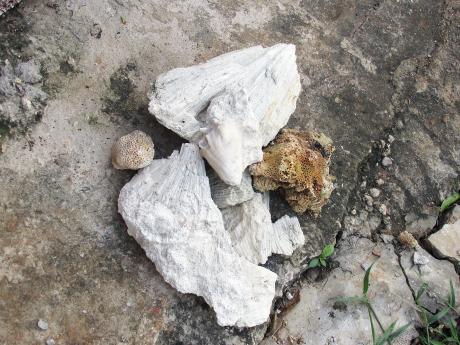Discovery Bay cave revisited
The Kirlews live at Dairy, Discovery Bay, St Ann, not far from the sea. Their house is located on a flat piece of land, a solid piece of rock not far from the main road. Or so they thought.
Some years ago, when they were having the rock drilled to make a swimming pool, their workmen literally plunged into a big subterranean surprise. The drill went through the rock into a hole. Further drilling and widening of the hole revealed a cave.
Upon hearing of the discovery, I travelled to see the marvel at Dairy. And I was really amazed. To see for myself, I went down, albeit with some reservations. The cave has two chambers through which crystal-clear, mildly salty water flows from south to north. The section that the workmen had pierced seemed to have collapsed, thus the reason why their tool went through it.
I was fascinated by the coral and other marine objects that were embedded in the roof of the cave, and even removed some of the water to have it tested. The story and pictures were published in The Gleaner in 2007, and readers were equally amazed at the fossils that were found embedded in the rock.
The Kirlews said after the story, somebody from the UWI visited, but has not returned to give a feedback. Since then, the mouth of the cave has been widened and the underground stream is visible from above. I revisited the spot recently and was more amazed this time around.
What I saw really got my mind going back, way back. I was shown many things that were removed from the cave. Some of them look like fossilised human bones, and there is one that looks like a huge fossilised piece of skull.
There are many pieces of fossilised coral, some very brittle. And embedded within the solid rock of the mouth of the cave are a variety of shells, including conch. It's like shells embedded in concrete, only that the rock seems softer.
I was brought to an area where the pieces of rock taken from the cave were disposed of, and the more I looked at them, the more I wondered about the place where I was standing, in the Kirlews' backyard. "What was it really like millions of years ago?" I asked myself.
The Kirlews, the workmen who were present during my first visit, and I discussed what could have happened. We looked at the possibility that that part of the island was below the sea and could have emerged as a result of volcanic activities. Yet the rocks do not seem to be volcanic, more like limestone.
In all of this, our big questions are: How did the shells and corals get embedded in these inland rocks? If the bone-like objects are really bones and skull fragments, whose are they? For answers, to the UWI Department of Geography and Geology I decided to turn. There, I met Dr Thomas Stemann, lecturer in the department.
Dr Stemann was not surprised by the objects I showed him. He said corals and shells are embedded in rocks all over Jamaica, even in the Blue Mountains, because Jamaica was once covered by the sea, from which it has emerged by tectonic activities.
Tectonics is concerned with the processes which control the structure and properties of the Earth's crust, and its evolution through time. Jamaica, Dr Stemann suggested, is about 100 million years old, and that the coastal regions are latest to have emerged.
It turned out that the bone-like objects were not bones, but could have been formed by some geological activities. But we were right; the sea was right there in the Kirlews' backyard. And now there is a fascinating cave, with a stream therein.






